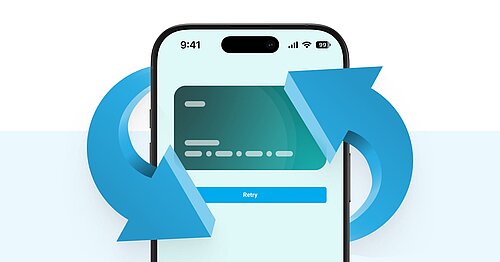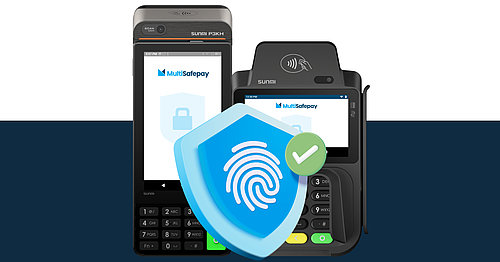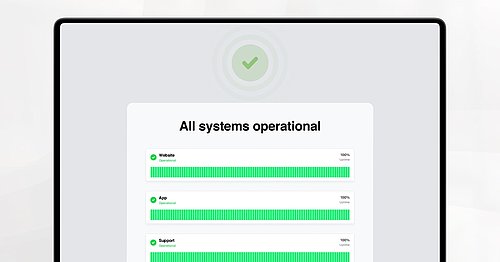Payment gateways explained: What they are, how they work and why it matters
A payment gateway is more than just a tool that moves payment data from A to B. It sits at the heart of your business, shaping your customer experience, checkout performance, operational workflows, and even your ability to expand across borders and channels.
While many payment gateways stop at transaction routing, forward-thinking businesses need more. You need a partner that simplifies complexity, connects the full payments ecosystem, and supports long-term growth.
What is a payment gateway?
At its core, a payment gateway is software that securely captures your customers’ payment details and routes them through the authorization process. In an online store, this might be the checkout portal where customers enter their payment information. In physical stores, it is the point-of-sale terminal used to pay by card or smartphone.
You can think of a payment gateway as the digital equivalent of a card reader. It collects, encrypts, and transmits data to the next party in the payment chain.
Key functions of a payment gateway
A typical payment gateway handles:
Encryption of payment data
Authorization requests
Fraud detection
Routing payment information to the processor or acquirer
Returning transaction status to the merchant and customer
But knowing what a payment gateway is doesn’t tell the full story. To understand its impact on your business, you also need to look at what it cannot do on its own.
Types of payment gateways
Not all gateways are set up the same way. The type you choose influences security responsibilities, compliance requirements, and the overall user experience.
Redirect: The customer is sent to a secure third-party page to complete their payment.
Checkout on-site, payment off-site: Payment information is collected on your site but processed on the payment provider’s backend. Your site never directly handles sensitive data.
On-site: Both checkout and payment processing take place on your website. This gives you full control over the customer experience but also means you must take on more responsibility for data security. This option is generally used by larger businesses.
How does a payment gateway work?
When a customer checks out, the payment gateway triggers a process that involves several parties:




Step 1: The gateway captures and encrypts the customer’s payment details.
Step 2: It securely sends this data to a payment processor.
Step 3: The processor communicates with the acquiring bank, which then reaches out to the issuing bank (the customer’s bank).
Step 4: The approval or decline response travels back through the chain and updates your store in a matter of seconds.
This system allows online transactions to happen quickly and securely. However, it also means you are often working with multiple third parties just to complete a single payment. That is before adding fraud tools, local payment methods, advanced reporting, or multiple sales channels into the mix.
Payment gateway vs payment processor
Although closely linked, a payment gateway and a payment processor are not the same.
Payment gateway | Payment processor |
Captures and encrypts payment data | Transmits payment data to banks |
Interfaces with customer checkout | Interfaces with acquiring and issuing banks |
Handles authorization requests | Handles settlement and fund movement |
Many providers offer only one of these services. Some, including MultiSafepay, combine both into a single platform. This reduces the number of third parties you need to manage and helps streamline the entire payment flow.
Where basic payment gateways fall short
Most traditional gateways are built to handle the basics:
Route transactions
Accept standard card payments
Return simple status updates
For smaller businesses or those just starting out, this might be enough. But as your business grows, limitations often become clear:
Limited or no access to international payment methods
Multiple integrations needed to handle fraud prevention, reporting, or reconciliation
Slow onboarding or limited technical support
Extra costs when adding essential features
While it’s technically possible to build your own payment gateway, doing so is rarely practical. The costs, compliance burdens, and complexities of managing international transactions and regulations make this an expensive and time-consuming option.
These are not just technical gaps. They can directly affect your conversion rates, create operational friction, and hold your business back from expanding into new markets.
A connected approach: Beyond the gateway
Rather than bolting on more providers and tools over time, many merchants now look for ways to simplify. This means partnering with companies that can combine multiple payment services into one solution.
At MultiSafepay, we have built a platform that connects the full payment process. This includes the gateway and processor, as well as acquiring and method aggregation. For merchants, this means more control, fewer moving parts, and a stronger foundation for growth.
This is also where MultiSafepay’s embedded JavaScript Components come in. By using our Components solution, your checkout is directly connected to our infrastructure. It takes care of both the payment gateway and processing flows, securely handling data transmission and authorization in one step. This reduces technical overhead, shortens development time, and keeps sensitive data away from your servers.
What this can look like for your business:
Faster setup with fewer third parties to coordinate
Easier reconciliation and reporting through a single dashboard
Access to over 40 local and international payment methods
Support for both online and in-person transactions
Tools, APIs, and plugins built in-house for seamless integration
Instead of managing separate providers for each piece, you can focus on growing your business, while your payments are fully handled behind the scenes.

Don’t just pick a gateway, choose a growth partner
Many merchants first search for what a payment gateway is because they are building or upgrading their online or physical store. But that decision should not stop at what works today.
It’s worth asking:
Will this payment setup scale as my business grows?
Does it simplify my operations or add more layers?
Will I need to add additional tools (and pay more) in the future?
If your current system only covers the basics, or if you find yourself juggling multiple platforms just to complete one sale, it might be time to explore more connected alternatives.
At MultiSafepay we do more than supply a payment gateway. We connect the entire payment journey, from checkout to settlement, data insights, and expert support, so you can grow your business with confidence.
Ready to simplify your payments?
Explore how MultiSafepay helps merchants move beyond the basics and build a payment experience that is ready for whatever comes next, all within a single platform.



